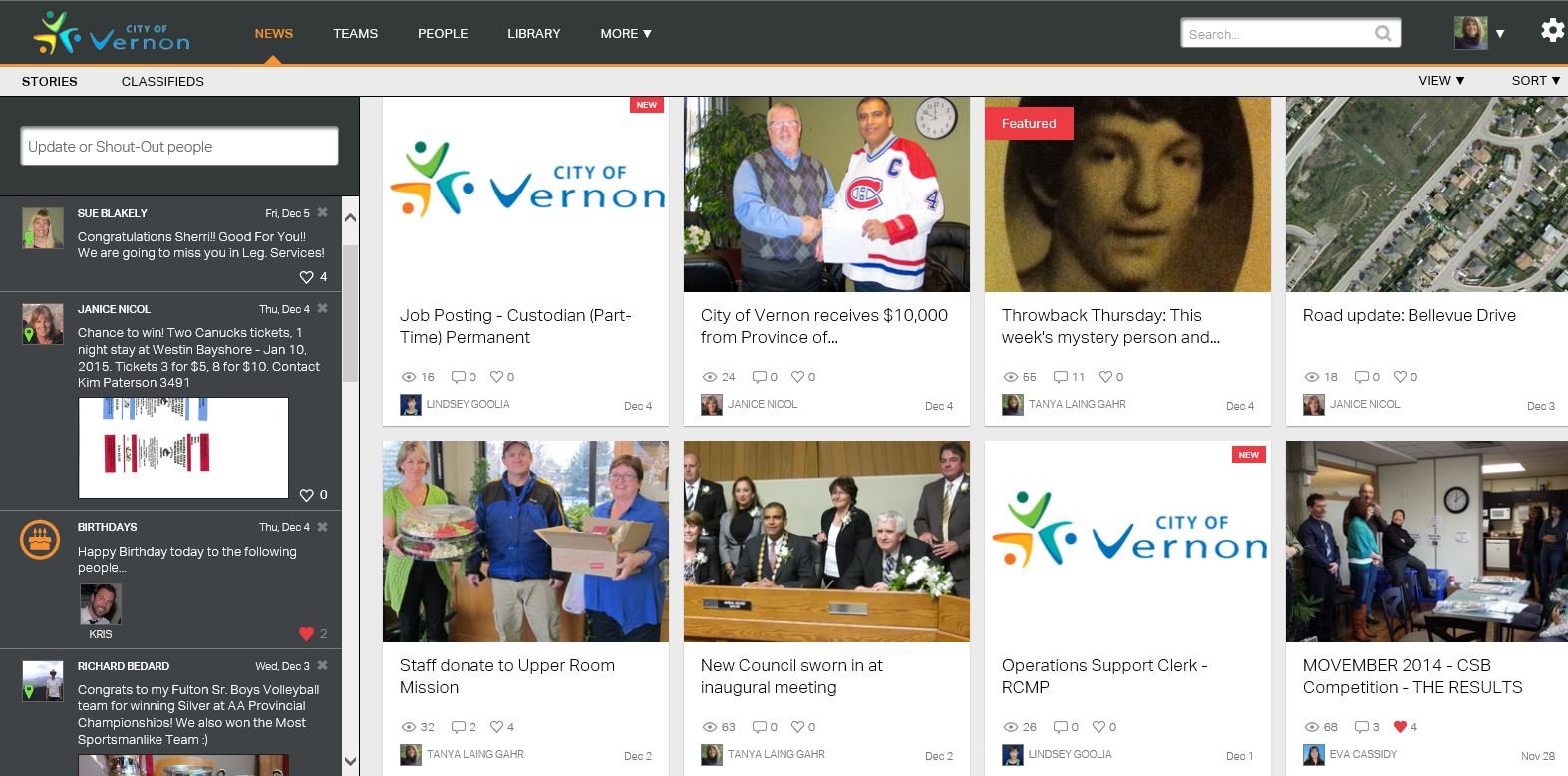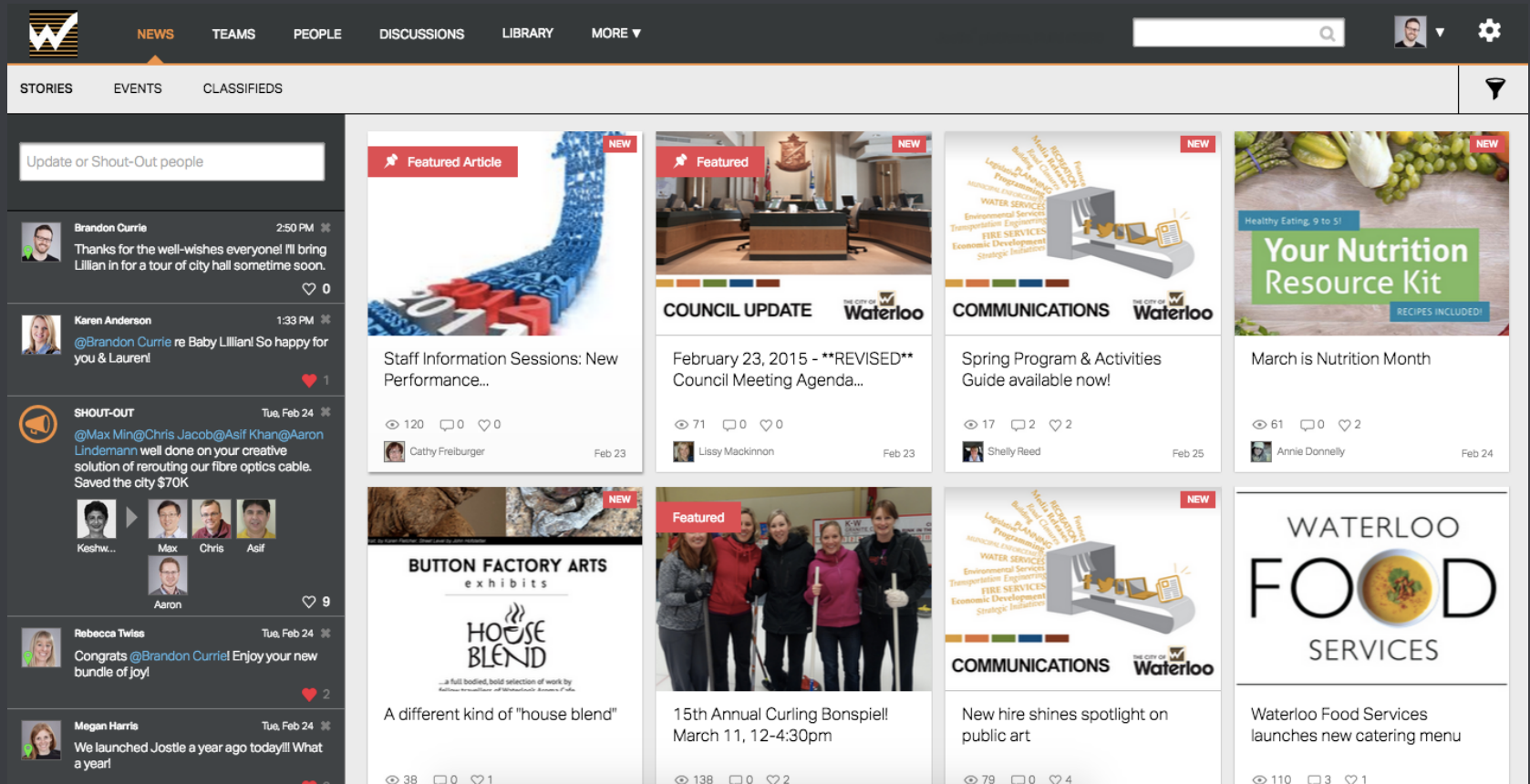
5 min read
Turning cities into vibrant and healthy workplaces is challenging. Few workplaces are more complex and dispersed than municipal environments. We've learned from our city customers that creating healthy city workplaces is all about connecting through communications and culture.
By Brad Palmer
Turning cities into vibrant and healthy workplaces is challenging. So many different kinds of employees, spread across many generations. So many kinds of jobs, split across professions and trade unions. So many locations, indoors and out. Few workplaces are more complex and dispersed than cities and local governments.
Creating healthy city workplaces is all about connecting. Connecting people to each other (communication) and connecting people to the purpose and vibe of the workplace (culture). Communication and culture help dispersed employees share values, goals, successes, and current happenings.
Achieving this takes inspired leadership, clarity on the values that provide the foundation of workplace culture, and a comprehensive communications platform (such as an employee intranet). Let’s look at some examples of Canadian cities that have taken action to make their workplaces happier and more productive.
With a population of 38,000, the City of Vernon is the commercial hub of the northern Okanagan region of British Columbia. The city employs about 370 people spread across 11 office locations. Vernon’s leadership team recognized that pulling together dispersed employees into a single, energized workplace was key to retaining staff and attracting new employees.
Vernon already had a wonderful workplace culture, but most employees did not recognize its existence. They worked in silos and were unfamiliar with employees at other offices. To fix this, Patti Bridal, Director, Corporate Services, set about implementing a modern intranet that would connect every city employee and help bring their culture to life. It also helped employees get to know staff they wouldn’t have otherwise known, which has helped immensely with employee onboarding.
Vernon is now reaping the benefits of a strong culture. “It’s amazing how connected people are now,” said Patti. “The sociability between colleagues is leading to increased knowledge sharing that will not only help employees individually, but will also benefit our entire organization. Research clearly shows a direct correlation between employee engagement and culture and overall organizational success.”
 The City of Vernon’s employee intranet connects employees working in 11 different offices, as well as mobile employees in the field
The City of Vernon’s employee intranet connects employees working in 11 different offices, as well as mobile employees in the fieldWith over 63,000 residents, St. Albert is located north of Edmonton, Alberta, and is renowned for its rich heritage, artistic community, and natural environment. As Patrick Draper, City Manager for St. Albert, explains, they implemented a modern employee intranet “to be able to reflect our culture. The articles we post celebrate success and congratulate people on a job well done. We use that mechanism to visibly reinforce our culture. We try to live our values.”
Recognition is an important part of reinforcing the values that underlie their culture. Pat cites this example that recognizes the value of great teamwork, “This morning there was a Shout-Out from a GM to the finance team for doing a great job at a counsel meeting on Monday. Our intranet provides a mechanism for recognition to happen on a small scale, so you're not always waiting for the annual event.”
Northumberland County provides local government to over 80,000 residents in south-eastern Ontario. Kate Campbell, their Director of Communications, cites a problem that most Canadian municipalities face: “We have individuals at different locations and, beyond that, we also have a split between office workers who use computers every day as part of their work and workers who do not need computers at all as part of their day to day.” This creates a challenging communications problem to deliver a consistent message to everybody.
Larry Dean, IT Manager at Northumberland, worked with Kate to solve this problem by implementing a modern, cloud-based intranet. Larry explains, “Initially we really wanted to make sure everybody had the chance to participate. So, because of the diverse locations of the departments, we had to make sure that we had technology there for everybody to have an opportunity, even if they don’t use a computer for their daily work. We made sure we had computers set up with access to the Jostle® platform in every lunchroom in every facility, offering everybody the opportunity to participate. That was key and then getting the information out to everybody.“
Mobile was a key part of their strategy. According to Larry, “For the people at our recycling facility, or the nursing staff, or the healthcare aids — we’re really going to push for them to use the app, because everybody’s got their phone on them all the time.”
As Kate points out, “the most successful organizations are the ones that have managed to mobilize and engage their teams. One of the biggest ways to do that is when everybody is clear on what they are working towards. What is the shared goal, and what is the shared vision, and what are we trying to achieve together on a day to day? It’s true that most organizations fall down in that area, especially the bigger you get, it’s hard to communicate that vision and that mission to everybody across diverse roles. Really what I would love is to use this tool to realize that vision.”
For the City of Waterloo, the goal was to connect employees across their many locations. They wanted an intranet employees would engage with through active participation. Waterloo’s Director of Communications and Marketing, Megan Harris, explains: “Our priority was for all staff from multiple locations to get to know and engage with each other. We worked with Jostle to provide that opportunity. We wanted to get to know each other and not just to get to know each other by online discussions or posting a news item but by physically seeing their faces so that everyone has a picture, everyone knows what you look like.“
“Being able to share and shout out to people and congratulate people on work histories and birthdays and sharing information, we can get behind each other and share our stories amongst our colleagues and we can cheer each other on. We can support each other.”
“It’s really a two-way dialogue and that’s something that we never had before and something that was extremely important to us in developing a new intranet system. I think it is the way of the future. In my opinion, a happy employee, is an engaged employee. Our goal for six months out, was to be 100% active and we achieved that in five months I think. We’re really proud of where we’ve come.”
 The City of Waterloo’s cloud-based intranet reflects key aspects of their workplace culture and is frequently used to Shout-Out fellow employees
The City of Waterloo’s cloud-based intranet reflects key aspects of their workplace culture and is frequently used to Shout-Out fellow employees
These four Canadian local governments provide clear examples of how investing in a modern intranet tames the complexity often found in city workplaces, allowing culture to thrive and helping employees connect, engage, and participate.
We're proud of the role we've played to help our municipal customers create great workplaces. We'd love to help you connect and thrive in your environment. Visit our website for more information.
Read more by
Brad Palmer
Jostle’s employee success platform is where everyone connects, communicates, and celebrates at work. Find out more at jostle.me. © 2009–2024 Jostle Corporation. All rights reserved.